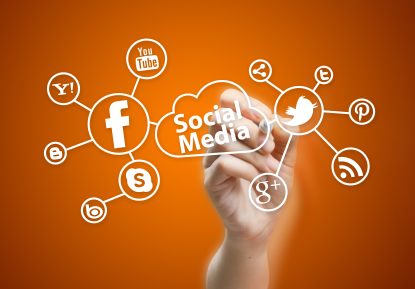
There is a lot of hype about social media, and I understand its advantages. I have a network of friends across the globe that I can tap into within seconds. I can Skype my sister in California, Facebook my friend in New York, Tweet to my former classmate in London, and comment on my boyfriend’s Instagram photo taken in Winnipeg – all with very little effort.
The Dawn of Social Media
This digital connectivity is a historically recent phenomenon.
Its beginnings trace back to 1991, when Tim Berners-Lee connected hypertext technology with the Internet, leading to the creation of the World Wide Web. Soon, email replaced snail mail and weblogs replaced printed diaries and journals. New communities formed online, creating alternate means of social interaction.
A decade later, Web 2.0, a term coined by Darcy DiNucci, shifted the dynamics of virtual communities. Instead of only allowing Internet users to passively read online content, Web 2.0 now permitted individuals to actively interact as creators of user-generated content. Today, social media outlets – such as Facebook, Twitter, Google+, LinkedIn, and Skype – form a large part of social interactions.
How Social is Social Media?
We have witnessed a series of technological breakthroughs, but has there been a corresponding social breakthrough? Has social media contributed to us becoming more social?
Proponents of social media suggest that it has enhanced our relationships. Rainie et al., for instance, claim that individuals should not fear the Internet; rather, if they learn how to network effectively online, they can benefit from endless possibilities to offer support, exchange information, and converse with people all across the globe.
But while online communities can produce a greater quantity of personal contacts, they tend to diminish the quality of interactions.
Malcolm Gladwell is critical of the laziness that social media encourages. He argues that it is so easy for people to participate in social networks that they end up devoting less time and energy to their interactions with others.
Social media eases connectivity, but connectivity is not the same as connection. I can instant message my father in Guadalajara, but our online conversation will only scratch the surface of a deep father-daughter connection.
The bases of profound relationships – such as trust, commitment, and compatibility – are difficult to strengthen via pixels on sleek displays, no matter how aesthetically appealing and user-friendly they might look.
As pointed out by Monserrat, a person's tone of voice and body language is essential to forming strong relationships. It is easy to ‘like’ a friend’s Facebook photo, but it takes more time and involvement to show someone that you sincerely care about their well-being.
Some interactions on social media can even produce anti-social behaviours.
A survey conducted by VitalSmart revealed that 1 in 5 individuals has blocked, unsubscribed, or unfriended someone else due to an online quarrel. In other words, bullying, rudeness, and disrespect have permeated a medium intended to foster favorable social interactions.
Therapists: Listening Ears to Deaf Crowds
Means of communication are changing quickly, and therapists should reflect on how to respond to this new age of hyper-interconnectivity. They should not fear social media, but they should understand its strengths and weaknesses.
Participating in online networks can help build a therapist’s practice, allow for up-to-date exchanges of information, as well as produce healthy dialogues about mental health issues.
However, therapists should also recognize that – perhaps more than ever – they have unique contribution to make to the quality of people’s lives.
Fast-paced lifestyles combined with superficial virtual communities can produce social alienation, causing many to disconnect from others and even from themselves.
For some, a therapist might be the only person who can offer a full hour of their time to listen to their story, provide helpful insights, and encourage them along their journey – all without the interruption of Tweets, Facebook messages, Instagram photos, and LinkedIn updates.
Therapists offer a breath of fresh air in a world polluted by restless online hyperactivity.